History of Yoshkar-Ola
Before the founding of Yoshkar-Ola
According to archaeological excavations, people in the vicinity of today’s Yoshkar-Ola lived already in the Mesolithic era (about 14 thousand years ago). This area was surrounded by dense forests, which allowed the local population to hunt and gather, and use the forest as a building material. The areas cleared of forests were plowed up and used for the needs of agriculture and cattle breeding. Beekeeping and fishing were also developed.
Between the 13th and 15th centuries, the territory of Yoshkar-Ola was inhabited by the Mari people and was part of the Golden Horde (originally the northwestern part of the Mongol Empire). Then, until the middle of the 16th century, it was the northern periphery of the Kazan Khanate, through which trade, economic and military-political ties were carried out between Kazan and the northeastern Russian lands. As part of the Kazan Khanate, the Mari did not have towns, they lived in small settlements.
In October 1552, the long military rivalry between the Russian principalities and the Golden Horde, and subsequently between the Tsardom of Russia and the Kazan Khanate, ended with the capture of Kazan by the troops of Ivan the Terrible. The Middle Volga region, including the Mari territory, became part of the Russian state.
Already in mid-October 1552, part of the local population was sworn in allegiance to the Russian Tsar and pledged to pay him yasak (tribute). But already in December, the Mari rebelled in many places refusing to obey the new orders of the Moscow government, which, among other things, included forced Christianization. In the spring of 1553, a whole series of uprisings began named the “Cheremis Wars” (1552-1557, 1571-1574, 1581-1585). Cheremis is the Russian pre-revolutionary name for the Mari people.
More Historical Facts…
Foundation of Yoshkar-Ola
Uprising in this region periodically flared up again. That’s why the Russian authorities decided to build several fortified settlements in the inland areas at a distance of a day’s march of foot troops (50-60 km) in order to finally pacify the locals. This was done after the death of Ivan the Terrible, during the reign of Fyodor Ioannovich. It is to this decision that the city of Yoshkar-Ola owes its birth.
“Tsar’s town on the Kokshaika” (hence the first official name of the settlement - Tsarevokokshaisk) was founded in 1584. Initially, it was a typical fortified settlement surrounded on four sides by earthen ramparts with wooden walls.
Over time, Tsarevokokshaisk ceased to fulfill its military function, turning into a craft and trade center. Artisans and traders began to settle here, mainly from the central regions of Russia. Agriculture became the main occupation of the local population. Hops were grown in the vicinity of the town. Fur trade, forestry and distillation flourished. But the bulk of the population was still military. From the non-Russian population, newly-baptized service class people - Tarkhans - lived here. The name of one of the city micro-districts (“Tarkhanovo”) still reminds of this.
Yoshkar-Ola in the 18th - early 20th centuries
In the 18th century, the town changed somewhat: stone houses appeared, five churches were built. Local merchant dynasties began to take shape. In 1835, the first regular plan of Tsarevokokshaisk was created. According to this plan, the town was gradually turning into a trade, economic and cultural center of the Mari region, although its population was only about 2,000 people.
In the middle of the 19th century, Tsarevokokshaisk began to be used as one of the places of political exile. Participants of the 1863 Polish Uprising were exiled here. In terms of the level of secondary education, Tsarevokokshaisk during this period, with five schools, occupied the first place in the region. But at the same time, there was no developed industry in the town. Only at the end of the 19th century, a small distillery was built in Tsarevokokshaisk, employing 70 workers.
By the beginning of the 20th century, Tsarevokokshaisk remained a quiet provincial town, consisting of 13 streets and about 300 different buildings. It remained in this form almost until the 1920s. The economy was based on agriculture, the most numerous class was the peasantry.
Yoshkar-Ola during the Soviet period
On February 17, 1919, Tsarevokokshaisk was renamed Krasnokokshaisk (“Red Kokshaisk”). On November 4, 1920, a decree was adopted on the formation of the Mari Autonomous Oblast with the administrative center in Krasnokokshaisk.
On January 23, 1928, Krasnokokshaisk was renamed again and received the Mari national name - Yoshkar-Ola, which in translation from the Mari language means “Red Town”. In December 1936, the Mari Autonomous Oblast was transformed into the Mari Autonomous Soviet Socialist Republic, and the town of Yoshkar-Ola became its capital. In 1939, its population was 27,179 people.
During the Second World War, several factories were evacuated to Yoshkar-Ola, which gave a powerful impetus to the industrial and socio-economic development of the town. Of great importance for the economic growth of Yoshkar-Ola was the construction of a high-voltage power line from Zelenodolsk (1959) and a gas pipeline (1967).
In the 1950s-1960s, the ensemble development of the central district of the city was carried out, which was a great achievement of the local architects. Gradually, the development along Institutskaya Street (present Lenin Avenue) was formed, which became the main street of Yoshkar-Ola. New buildings of the city administration and the government of the Mari ASSR were constructed here. In 1962, the population of Yoshkar-Ola was about 110,000 people.
In the 1970s-1980s, the largest urban planning event in Yoshkar-Ola was implemented - the development of the left bank of the Kokshaga River and the construction of the residential microdistrict of Sombatkhey named after the Hungarian sister city of Yoshkar-Ola (Szombathely). In turn, one of the districts in Szombathely is called Yoshkar-Ola. In 1989, the population of the city was about 248,000 people.
Yoshkar-Ola in the 21st century
In 2008-2009, the historical and cultural complex “Tsarevokokshaisk Kremlin” was built - an architectural ensemble of churches, fortress walls and towers, stylized as a medieval Russian fortress. Earlier on this place there were the walls of the original wooden fortress of Tsarevokokshaisk.
In 2010-2014, a city embankment called the Bruges embankment was built. Elements of Flemish architecture, Northern Gothic were used in its architecture: buildings with a solid facade, colorful houses, bright decorative elements, turrets, spires, ornaments.
The large-scale development of the city center in the first decades of the 21st century greatly changed its appearance, turning Yoshkar-Ola into one of the most interesting and unusual cities in the region.
Picturesque architecture of Yoshkar-Ola
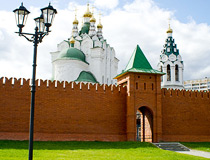
Church of the Holy Trinity and a stylized Kremlin wall in Yoshkar-Ola
Author: Sergey Kozin
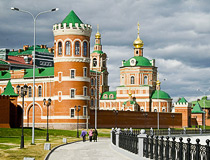
Beautiful buildings on the embankment and the Resurrection Cathedral in Yoshkar-Ola
Author: Sergey Kozin
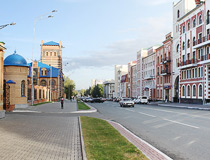
Uspenskaya Street in Yoshkar-Ola
Author: Sergey Kozin
Yoshkar-Ola - Features
Yoshkar-Ola is located on a flat territory in the center of the Republic of Mari El, about 50 km north of the Volga River and 640 km east of Moscow (in a straight line), on the southern border of the taiga zone in an area of mixed forests, on the banks of the Malaya Kokshaga River, which divides the city into two parts.
The climate in the city is moderately continental with rather long cold winters (from late November to March) and warm summers. The average temperature in January is minus 10.9 degrees Celsius, in July - plus 19.1 degrees Celsius. According to the 2010 all-Russian census, the ethnic composition of the population of Yoshkar-Ola was as follows: Russians (61%), Mari (23%), Tatars (4%).
Yoshkar-Ola is traditionally considered one of the “greenest” cities in Russia. On almost all sides It is surrounded by forests, and also has a large number of urban green spaces. The emblem of Yoshkar-Ola depicts an elk repeating the first historical emblem of the town adopted in 1781, which reflected the fact that local residents hunted elks. Translated from the Mari language, “Yoshkar-Ola” means “Red City”.
It is a city with a predominance of industry in the structure of gross urban production, in which the leading role belongs to enterprises of the mechanical engineering, building materials, and food industry.
The disadvantage of the city’s transport and geographical position is the passage of the main federal highways along the periphery of the republic’s territory. The federal highway R176 “Vyatka” passes through Yoshkar-Ola, connecting the cities of Cheboksary, Kirov and Syktyvkar. At some distance from the city, there are important transport routes of federal significance: the Moscow - Kazan - Yekaterinburg railway, the M7 Volga highway (Moscow - Cheboksary - Kazan - Yekaterinburg).
There is no navigation on the Malaya Kokshaga River, which flows through the city. But the Yoshkar-Ola pier in the village of Kokshaisk on the Volga is considered the water “gateway” of this city. You can easily get to Yoshkar-Ola by train (15 hours) or plane (1.5 hours) from Moscow.
During the first two decades of the 21st century, the center of Yoshkar-Ola was significantly rebuilt and became one of the most unusual urban landscapes in Russia. Leonid Markelov, the former head of the Republic of Mari El, was behind the idea to recreate in the city a number of world famous architectural monuments. The main source of his inspiration was the Italian Renaissance, so many buildings in the center of the republic’s capital were constructed, as locals joke, “in the Venetian and Flemish styles characteristic of Yoshkar-Ola.”
The architecture of the city is complemented by numerous sculptures. Opposite the city registry office there is a monument to Grace Kelly and Prince Rainier of Monaco symbolizing marital fidelity. Also in Yoshkar-Ola you can find the monuments to Patriarch Alexy II, the first Mari Bishop Leonid, Tsar Feodor I Ioannovich (the only monument in Russia to the third son of Ivan the Terrible), and Lorenzo Medici (the most powerful patron of Renaissance culture in Italy), with whom, according to rumors, Leonid Markelov associated himself.
Main Attractions of Yoshkar-Ola
Obolensky-Nogotkov Square. Standing in this square, it is hard to believe that you are in a Russian city, especially when facing the Venetian-style building of the National Art Gallery and reminiscent of the Doge’s Palace on Piazza San Marco (St Mark’s Square) in Venice, Italy. In the center of the square there is a monument to Ivan Nogotkov-Obolensky (the first voivode of Tsarevokokshaisk) and a halved copy of the Moscow Tsar-Cannon.
National Art Gallery - one of the most picturesque buildings in Yoshkar-Ola. Here you can see a permanent exhibition called “Mari Color” (Mari embroidery, jewelry, folk costumes, paintings). Also, this gallery regularly hosts exhibitions of various collections from Russian and foreign museums, as well as private collections.
Sculpture “Yoshkin Cat” - one of the symbols of Yoshkar-Ola. If you stand facing Obolensky-Nogotkov Square, then to the right of it you will find one of the funniest and most popular street sculptures in Yoshkar-Ola - a bronze statue of a cat sitting imposingly on a bench. The cat is named after the abbreviated local name of the Mari capital - “Yoshka”.
There is also a Russian colloquial expression “yoshkin cat” in meaning similar to the exclamations “damn” or “damn it.” This phrase conveys different emotions: surprise, annoyance, bewilderment, irritation, or joy. If you go a little further, you will find yourself on Lenin Square, where you can see a monument to Vladimir Lenin and the building of the Shketan Mari National Drama Theater.
Bruges Embankment - one of the most beautiful places in Yoshkar-Ola, another unusual place for a Russian city, decorated with a clear reference to the architecture of Northern Europe. The multi-colored facades of the houses, crowned with decorative turrets, seem to have been transported here from Belgium. They look especially picturesque against the background of the imposing domes and red walls of the Orthodox Cathedral of the Annunciation.
Annunciation Cathedral. The project for the construction of this cathedral was based on the architectural plan of the Church of the Savior on Spilled Blood in St. Petersburg, but this church is not an exact copy of the latter. Its facade is decorated with rich decor, the elegant entrance resembles the entrance to the royal chambers, the graceful hipped-roof bell tower is crowned with a dome shining in the sun.
Also here you can see the building of the wedding palace constructed in the pseudo-Gothic style, a slightly modified copy of the Spasskaya Tower of the Moscow Kremlin with chimes, the republican puppet theater built in the style of the Bavarian Neuschwanstein castle, and several other interesting buildings. In general, this is a great place to take a lot of unique photos. In the summer season, you can go boating on the river.
Sights of Yoshkar-Ola
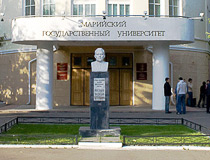
The entrance to the main building of Mari State University in Yoshkar-Ola
Author: Sergey Kozin
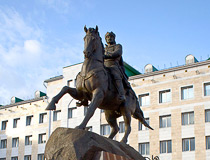
The monument to Ivan Nogotkov-Obolensky in Yoshkar-Ola
Author: Sergey Kozin
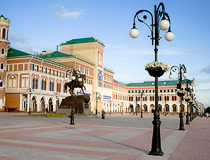
Obolensky-Nogotkov Square in Yoshkar-Ola
Author: Sergey Kozin
Church of the Holy Trinity (1736) - the first stone building in Yoshkar-Ola located in the immediate vicinity of the Annunciation Cathedral. Unfortunately, during the Soviet era, it was almost completely destroyed. Today’s snow-white building is a mixture of the Baroque style and traditional Russian architecture, characteristic of Central Russia in the 17th-18th centuries. Due to the abundance of stucco moldings and carved elements, the facade looks slightly overloaded, but it is still very picturesque and solemn.
Tsarevokokshaisk Kremlin. In the past, a wooden fortress wall that protected Tsarevokokshaisk passed through this territory. In the 2000s, a red brick Kremlin was built on this site, which included four towers connected by fortress walls. It became the youngest defensive structure in Russia. Fairs and festivals are regularly held on the territory of the Tsarevokokshaisk Kremlin. Voznesenskaya Street, 58.
Museum of the History of the General Directorate of Forced Labor Camps (Gulag). This museum is located in the city center, opposite the Tsarevokokshaisk Kremlin, in the former 19th century house of the merchant Bulygin. In the 1930s-1940s, this building housed the NKVD administration. The exhibits include hundreds of photographs, letters and documents, the uniform of investigators and the clothes of prisoners, instruments of torture used to extract confessions, etc. The Gulag History Museum in Yoshkar-Ola makes a bit of a painful impression, but is nevertheless popular with tourists and locals interested in history. Sovetskaya Street, 102.
Chavain Boulevard - the main and longest walking street in Yoshkar-Ola, passing through the city center and turning into the embankment. It is named after Sergei Chavain, a Mari poet, translator and playwright - one of the founders of Mari literature. This green boulevard with flower beds, fountains and benches is ideal for leisurely strolls after exploring the bright and unusual sights of the center of Yoshkar-Ola. All along the boulevard you can find cafes and restaurants; in summer, street musicians often play here.
Central Park of Culture and Rest. Walking along Chavain Boulevard, you will inevitably find yourself in the main park of Yoshkar-Ola. Rare plant species grow here: Siberian cedar, larch, Manchurian walnut, cork tree. Also in this park there is a 40-meter Ferris Wheel, which is the best observation deck in the city and a large-scale memorial complex dedicated mainly to the Second World War.
National Museum of the Republic of Mari El named after Timofey Yevseyev - the oldest museum in the republic with rich collections on the history, nature, ethnography, culture of the Mari region including objects of fine art, biological exhibits, items made of precious metals, stones, etc. The following exhibitions are open: “The Rites of the Life Cycle: Traditional Culture of the Mari People of the 19th-20th Centuries”, “The Pages of the History of the Mari Territory from Ancient Times to the 1980s”, “The Amazing World of Animals. Specially Protected Natural Territories of the Republic of Mari El”. Sovetskaya Street, 153.


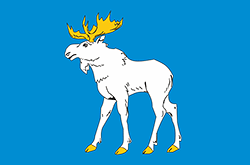
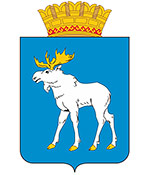
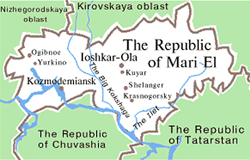






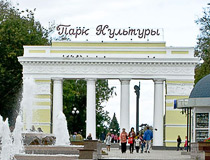
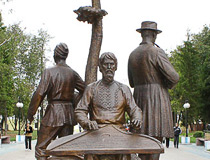
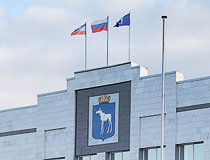
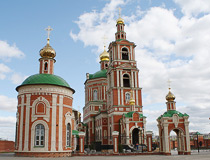
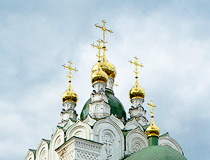
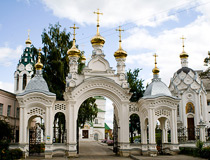
The comments of our visitors
All 9 comments